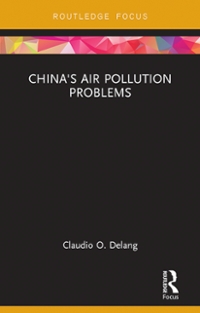Part 2A. Matching: Match the Key terms in Column "A" with the definitions in Column "B" by writing the block letter of your choice under column "A" and match the definitions in column "B" with the meanings or examples or real world applications or facts or formulas in column "C" by writing the lower letter case of your choice under column "B". Column "A" Column "B" Column "C" 1. Good A. Anything from which individuals receive a. All man made aids to production that facilitate the production of consumer (finished) utility or satisfaction. goods, It is divided into two: Financial (Money) and Real (in the sense that it is directly used in the production process as opposed to money used to buy real capital goods like machinery, 2. Utility B. The satisfaction one receives from a good. equipment, tools, tractors, combiners, warehouse & etc) . C. All natural resources, such as minerals, b. Tangible things that you can see, touch or feel that has the quality of satisfying human forests, water, and unimproved land. wants as opposed to services that are intangibles. It can also be classified as Economic 3. Bad D. The condition in which our wants are [iphones, ipads, game consuls, cars, and household and industrial items) or Free (air & natural greater than the limited resources available to resources available by the free gifts of nature). C. The next best thing that a person gives up because of the choice she or he made. It can be satisfy those wants. _4. Disutility goods & services (G&S) that your money can buy or an activity that you missed or an effort or E. The physical and mental talents people emotional investment that you made as a result of good or bad choice. Example: the amount of contribute to the production process. morning sleep students sacrifice for an early morning class that starts at dam. The benefit or use or levels of satisfaction that consumers get from a product (good or 5. Land F. The most highly valued opportunity or next . best alternative forfeited (given up) when a service) or taking part in an activity ( such as a game of play, entertainment or concert) e. The method of allocating goods and services (G&S) when there are shortages. For choice is made. example: Restaurants assign seats on first come first serve basis or Gas is rationed out based 6. Labor G. A means for deciding who gets what of on the last digit or letter of a car plate on alternate days at times of shortages available resources and goods. f. The opposite of a good (adj.) good (product) that causes harm to humans because of H. The dissatisfaction one receives from a ingestion or consumption or use. Example: pollution, chemical discharge, Second-hand 7. Capital bad smoke (as opposed to smoking that has benefit by itself to the smoker at least for the time being.) 9. The study of how humans choose to use scarce resources to satisfy their wants and I. Produced goods that can be used as inputs desires. It is also known as " the science of achieving efficiency". It is divided into two major 8. Entrepreneurship for further production: factories, machinery, categories: Microeconomics ("Micro" = Small) and Macroeconomics ("Macro"= Big). tools, computers, & etc. h. Pain, suffering, sickness or harm inflicted or caused by consuming or ingesting a bad J. The science of scarcity; the science of how I. The availability or supply of G&S & resources in limited amount in relation to the demand individuals and societies deal with the fact that for them. Also known as "Shortages" or "limited supply" or the opposite of "abundance" 9. Scarcity wants are greater than the limited resources j. It is differently defined in economics to mean and include all natural resources provided available to satisfy those wants. by the free gifts of nature and untouched or untransformed by humans (such as oceans seas, rivers, lands, forests, oil and minerals in the earth crust.) 10. Economics K. The talent that some people have for k. A special talent of human beings that is capable of taking risks associated with new organizing the resources of land, labor, and business idea and willing to organize a production activity by combining other resources such capital to produce goods, seek new business as labor, land and capital & set them in motion. Entrepreneur = is a person with this special 11. Rationing Device opportunities, and develop new ways of doing quality. All entrepreneurs are investors but not all investors are entrepreneurs. Example things. Steve Jobs, Bill Gates, Elon Musk, as opposed to share holders in the stock market (investors). A special kind of resource or factor of production that is embodied in human beings that is L. Anything from which individuals receive 1. 12. Opportunity Cost associated with the physical (manual or "Blue collar" ) work Or Mental ( skilled, trained, disutility or dissatisfaction. professional or "White Collar ") work. In between these two , there is Semi-Skilled labor







